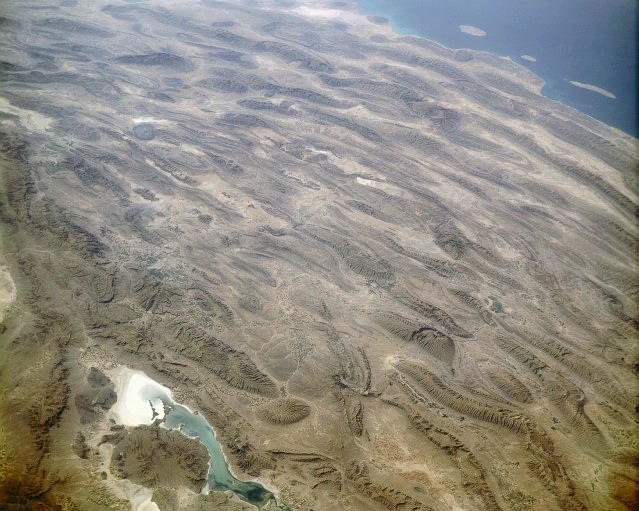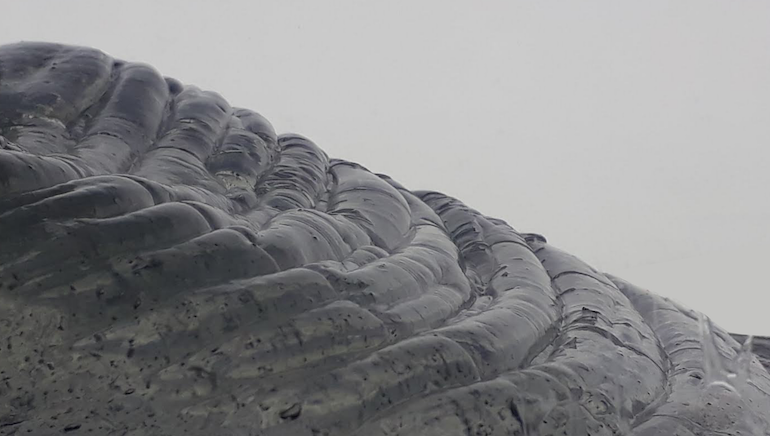Buckled Lands
Thomasina BallLink opens in a new window has been awarded a 2022 Leverhulme Trust Fellowship Early Career FellowshipLink opens in a new window to study Buckling instabilities in geophysical flows.
The surfaces of planetary bodies are littered with dramatic topographic features. On Earth these have long fascinated geologists trying to understand their origins. One example is mountain ranges, such as the Zagros mountains in Iran, that exhibit regular spaced folds on the surface on the scale of roughly 10km. At much smaller scales, in volcanic regions lava flows have patterns of buckles and folds imprinted on their surfaces on the metre to centimetre scale.
To understand the origin of these features, Thomasina turns to fluid dynamics. Counterintuitively, sedimentary rock that makes up mountain ranges can be modelled in the same way as lava – as a fluid. It is all a matter of timescales. Lava flows over the course of minutes while mountain ranges flow over the course of millions of years. Otherwise, these two processes are remarkably similar. Both have a layered structure where the viscosity, that is the resistance of the fluid to change shape or move, varies with depth. The material at the surface is more resistive (has a higher viscosity) than the material below the surface. In the case of lava this is due to a solidified crust, for mountain ranges this is in part due to the pressure exerted by the rock above.
These layered systems naturally compress horizontally when they flow. For lava this is due to topography while for mountain ranges this is due to the motion of tectonic plates. The compression of layers leads to a fluid-dynamic instability causing the stiff surface to fold and buckle. This is not dissimilar to the ‘wrinkle testLink opens in a new window' when making jam to check when a skin layer has formed and the jam is set.
By building mathematical models and performing laboratory experiments, Thomasina's research attempts to understand the size of these buckles in the natural world. In addition to understanding basic aspect of fluid dynamics, the outcomes of this research will be important for our understanding of how mountain ranges are formed and what that means for seismic hazard in many areas of the developing world. This research will also answer questions on whether surface features observed on other planetary bodies such as Mars are due to sedimentary or igneous volcanism; as well as advancing industrial processes such as 3D printing that exhibit layered viscosity fluid flows.
WMI Magazine staff
Published 5 October 2022
Zagros Mountains, Iran, are one of the worlds best known folded mountain ranges. (NASA Space Shuttle photo STS047-151-35.JPG)
The jam 'wrinkle test', from https://www.bbcgoodfood.comLink opens in a new window.
Experimental image of buckles formed on the surface of a fluid being compressed horizontally whose viscosity decreases with depth. Photograph by Elvinas Ribinskas.



